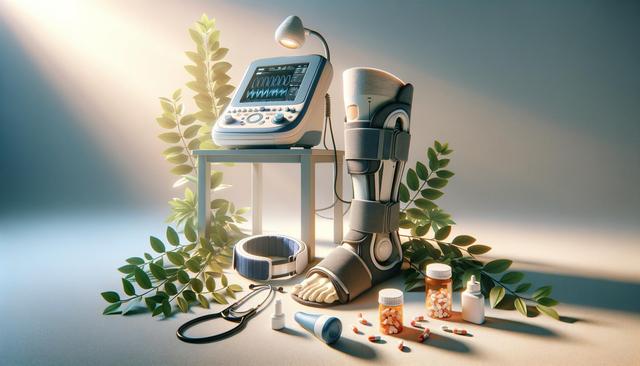Understanding Poor Leg Circulation and Its Causes
Poor circulation in the legs is often the result of underlying health conditions that affect blood flow, such as peripheral artery disease (PAD), diabetes, obesity, or prolonged inactivity. The arteries and veins in the lower body can become narrowed or blocked, making it harder for oxygen-rich blood to reach the muscles and tissues. This can cause symptoms such as leg pain, cramping, numbness, swelling, or a heavy sensation during walking or standing for long periods. In more advanced cases, skin discoloration and slow-healing wounds may appear. Identifying the root cause is crucial for effective leg pain treatment and improving circulation.
Common risk factors that contribute to poor leg circulation include:
- Smoking and tobacco use
- High blood pressure or cholesterol
- Sedentary lifestyle
- Advanced age
- Genetic predisposition to vascular conditions
Understanding these causes is the first step toward managing symptoms and preventing complications. Early diagnosis through a vascular assessment can help determine the severity of the issue and guide appropriate treatment options.
Effective Home Treatments for Leg Circulation
There are several home remedies that can support healthy leg circulation and reduce discomfort. Simple lifestyle changes and habits can go a long way in improving blood flow. One of the most recommended approaches is elevating your legs above heart level for 15-30 minutes a few times a day. This helps reduce swelling and encourages venous return. Wearing compression socks can also help by applying gentle pressure to the legs, supporting blood flow back to the heart.
Other home treatments to consider include:
- Alternating hot and cold leg soaks to stimulate circulation
- Staying hydrated to help maintain healthy blood viscosity
- Reducing salt intake to minimize fluid retention and swelling
- Massage therapy using circular motions to stimulate blood flow
It’s important to remain consistent with these home remedies and combine them with other treatments as advised by a healthcare professional.
Supplements and Devices for Circulation Support
In addition to lifestyle changes, certain supplements and therapy devices may support leg circulation. Natural supplements such as omega-3 fatty acids, vitamin E, and certain plant-based extracts like horse chestnut or ginkgo biloba are often suggested for their potential to improve vascular health. However, it is essential to consult with a healthcare provider before starting any supplement regimen, especially if you are taking medications or have preexisting conditions.
Devices that promote circulation include:
- Electric leg massagers to stimulate muscles and vessels
- Compression therapy pumps to assist with venous return
- Infrared heating pads to encourage blood flow through warmth
While these devices are not a substitute for medical treatment, they can be a helpful addition to your routine when used correctly and regularly. Monitoring your response and discussing progress with a healthcare provider ensures safe and effective use.
Top Exercises That Help Improve Leg Circulation
Regular physical activity is one of the most effective ways to enhance leg circulation and reduce pain. Exercise helps promote stronger heart function, improved vascular tone, and increased movement of blood through the lower extremities. Even low-impact activities can make a significant difference over time. Walking is often recommended as a starting point, especially for individuals dealing with PAD or chronic venous insufficiency.
Some beneficial exercises include:
- Leg lifts and ankle pumps while seated
- Calf raises to strengthen lower leg muscles
- Stretching exercises to prevent stiffness and promote flexibility
- Stationary cycling for low-impact cardiovascular engagement
Incorporating physical activity into your daily routine doesn’t have to be strenuous. The key is consistency and gradually increasing the duration or intensity as your condition allows. Always consult a healthcare provider before beginning any new exercise program, especially if you have vascular disease or other medical concerns.
When to See a Vascular Specialist
If you experience ongoing leg pain, swelling, or signs of poor circulation that do not improve with home care, it may be time to consult a vascular doctor. A specialist can perform diagnostic tests such as Doppler ultrasound or ankle-brachial index (ABI) measurement to evaluate blood flow and identify potential blockages or narrowing in the arteries. Early intervention can prevent more serious complications like blood clots or ulcers.
Some signs that warrant medical attention include:
- Persistent leg cramps, especially at night
- Skin changes like discoloration, thinning, or slow healing wounds
- Numbness or tingling that interferes with daily activities
- Visible varicose veins or spider veins causing discomfort
Finding a reputable vascular doctor near you can be done through referrals from your primary care physician or by searching for local specialists online. Many clinics now offer virtual consultations, making it more convenient to assess your symptoms and determine next steps for treatment.
Conclusion: Taking Steps Toward Better Leg Health
Improving leg circulation is essential for reducing pain, enhancing mobility, and preventing long-term complications. Whether you’re managing early symptoms or dealing with chronic vascular issues, a combination of home treatments, physical activity, supplements, and medical care can make a meaningful difference. Understanding the causes of poor circulation and taking proactive steps allows you to regain comfort and maintain a more active lifestyle. If symptoms persist or worsen, consulting a vascular specialist is a key part of your journey toward better leg health.




Leave a Reply